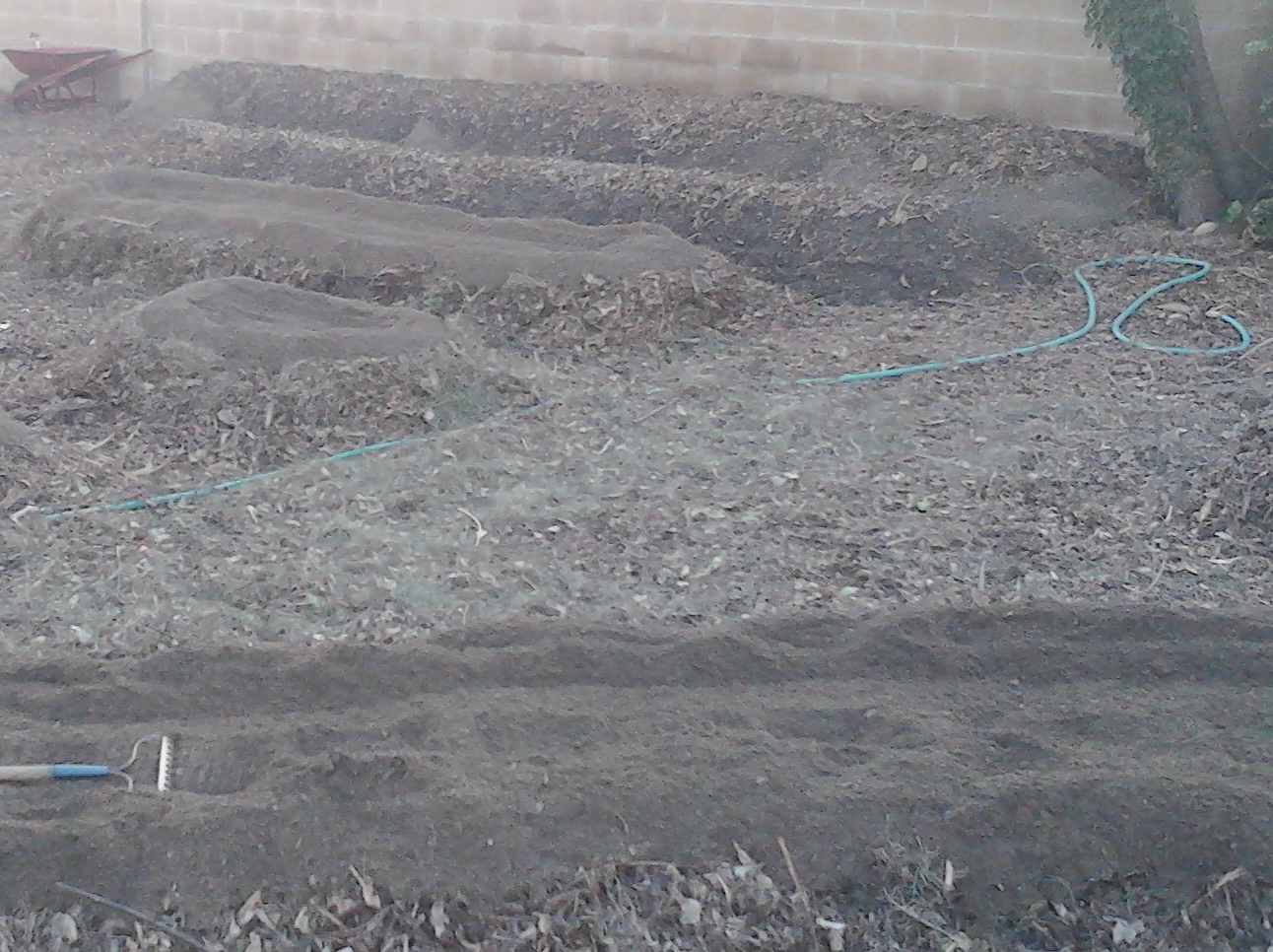
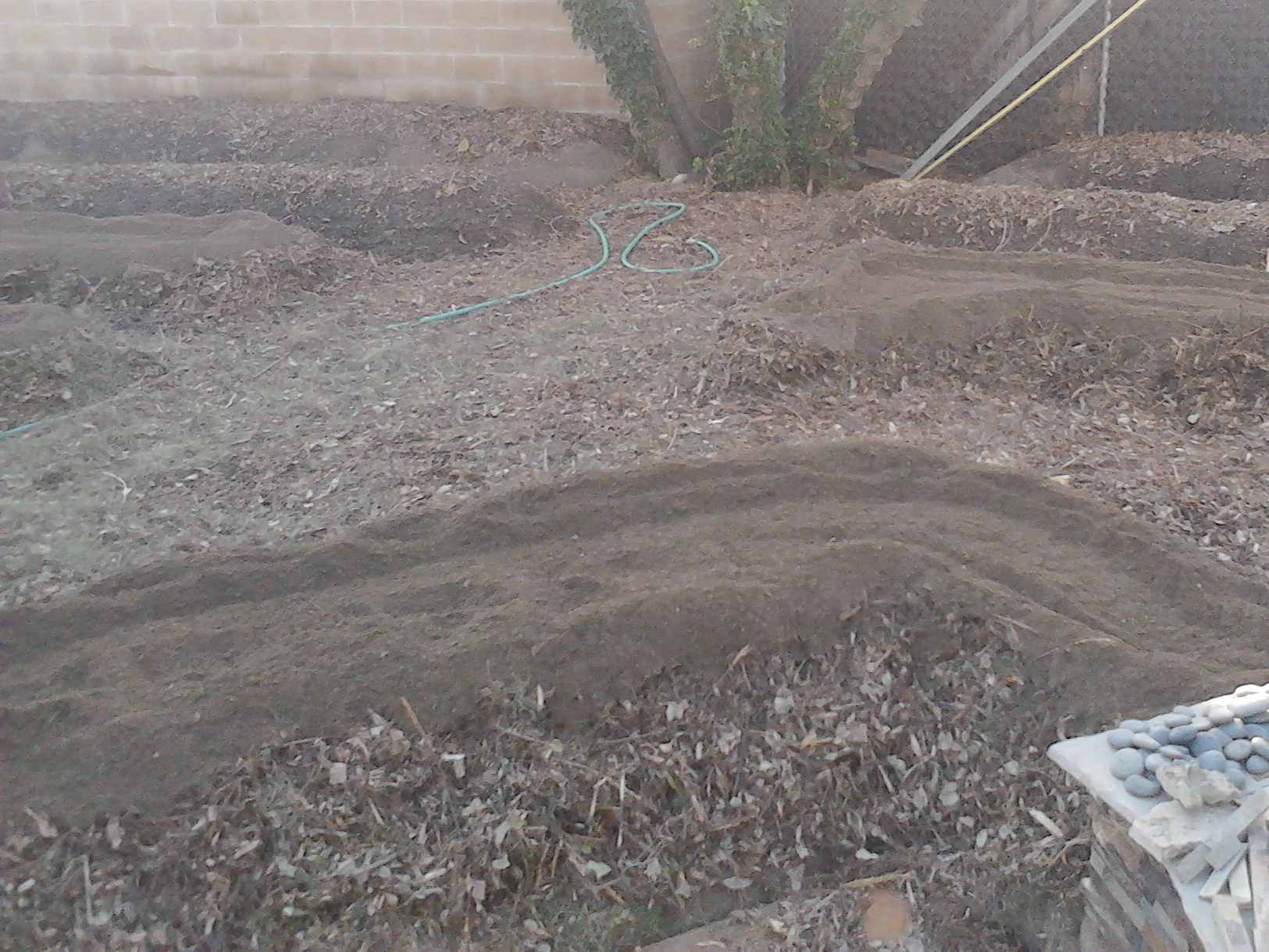

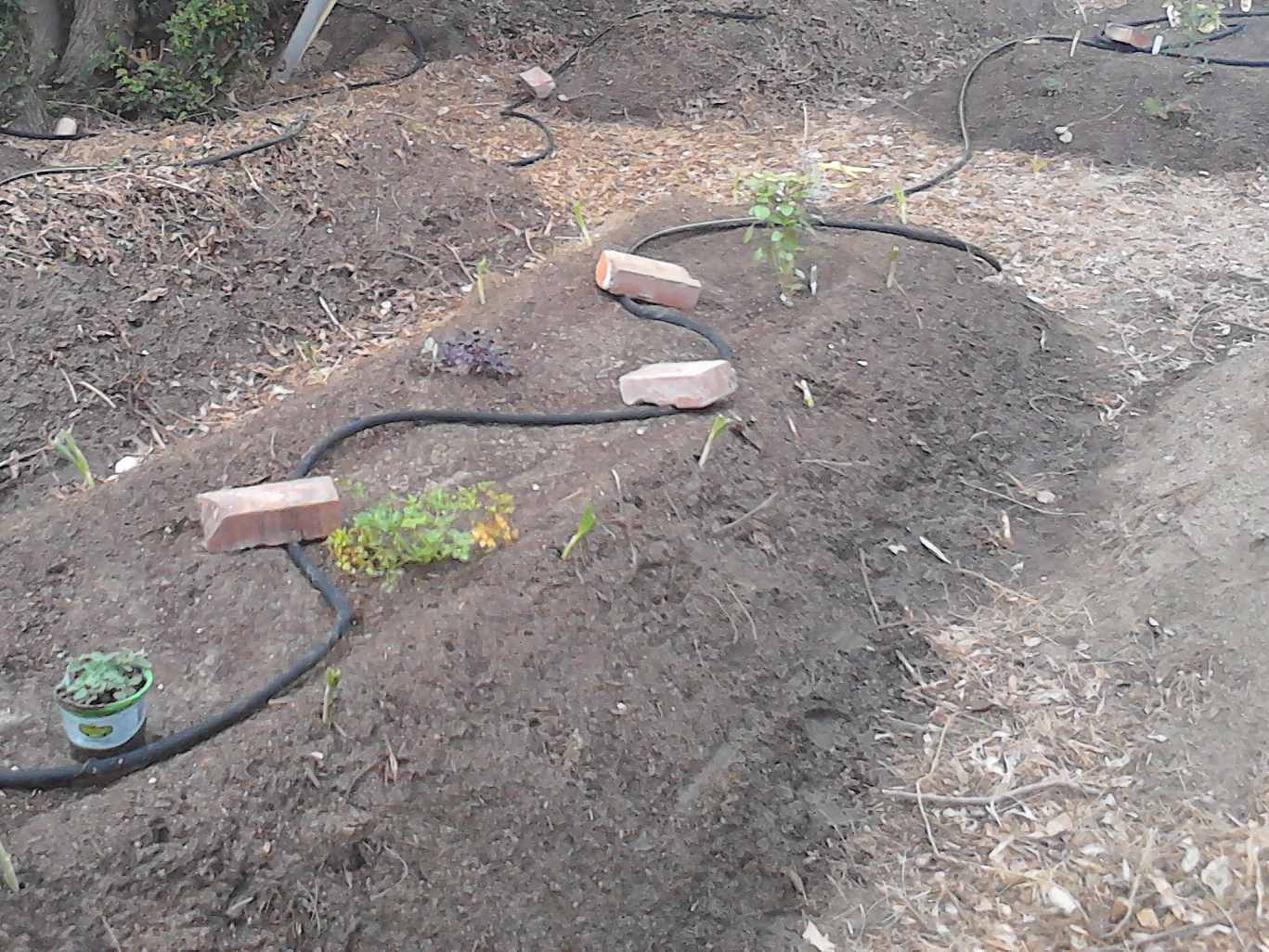
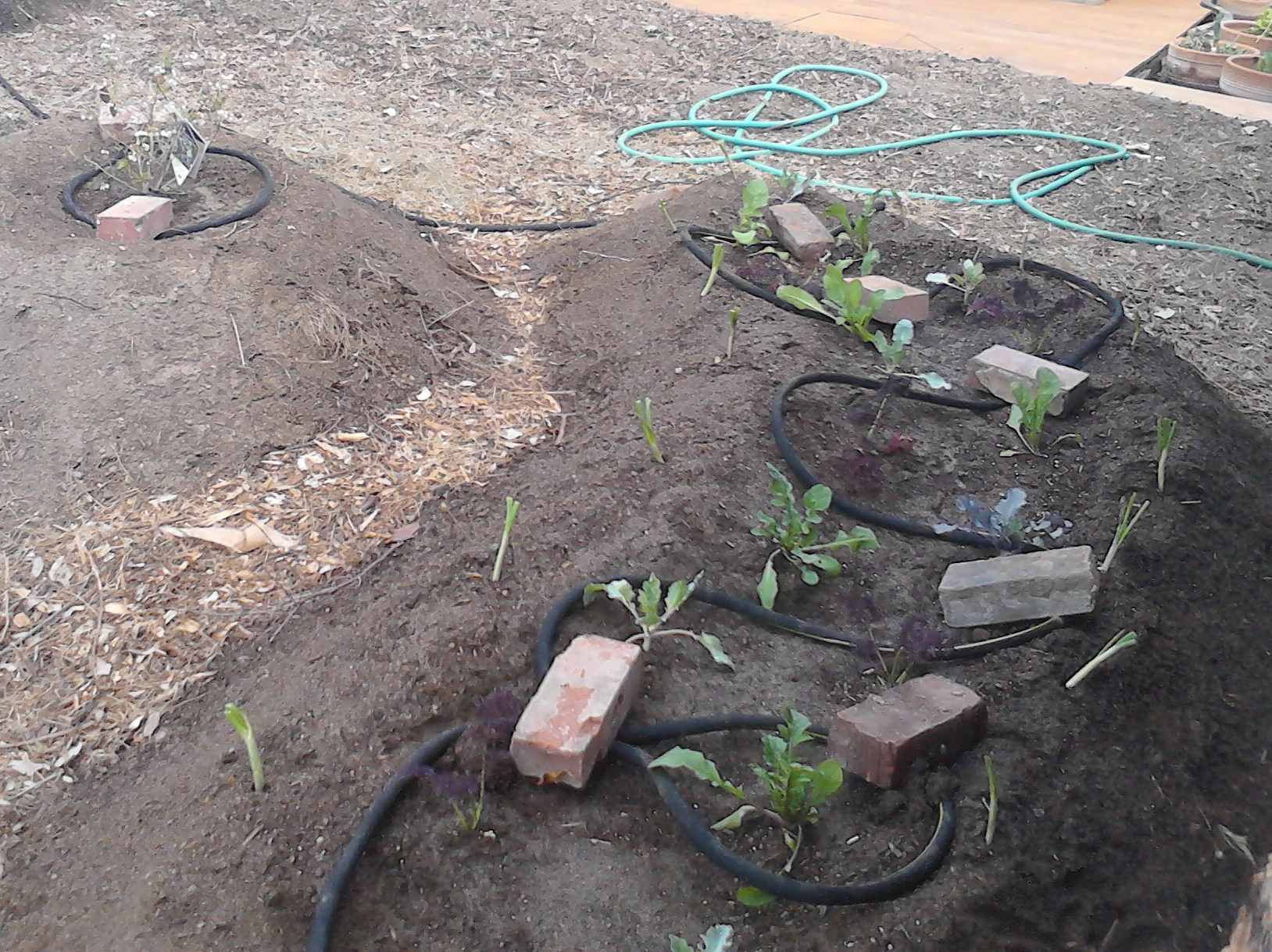
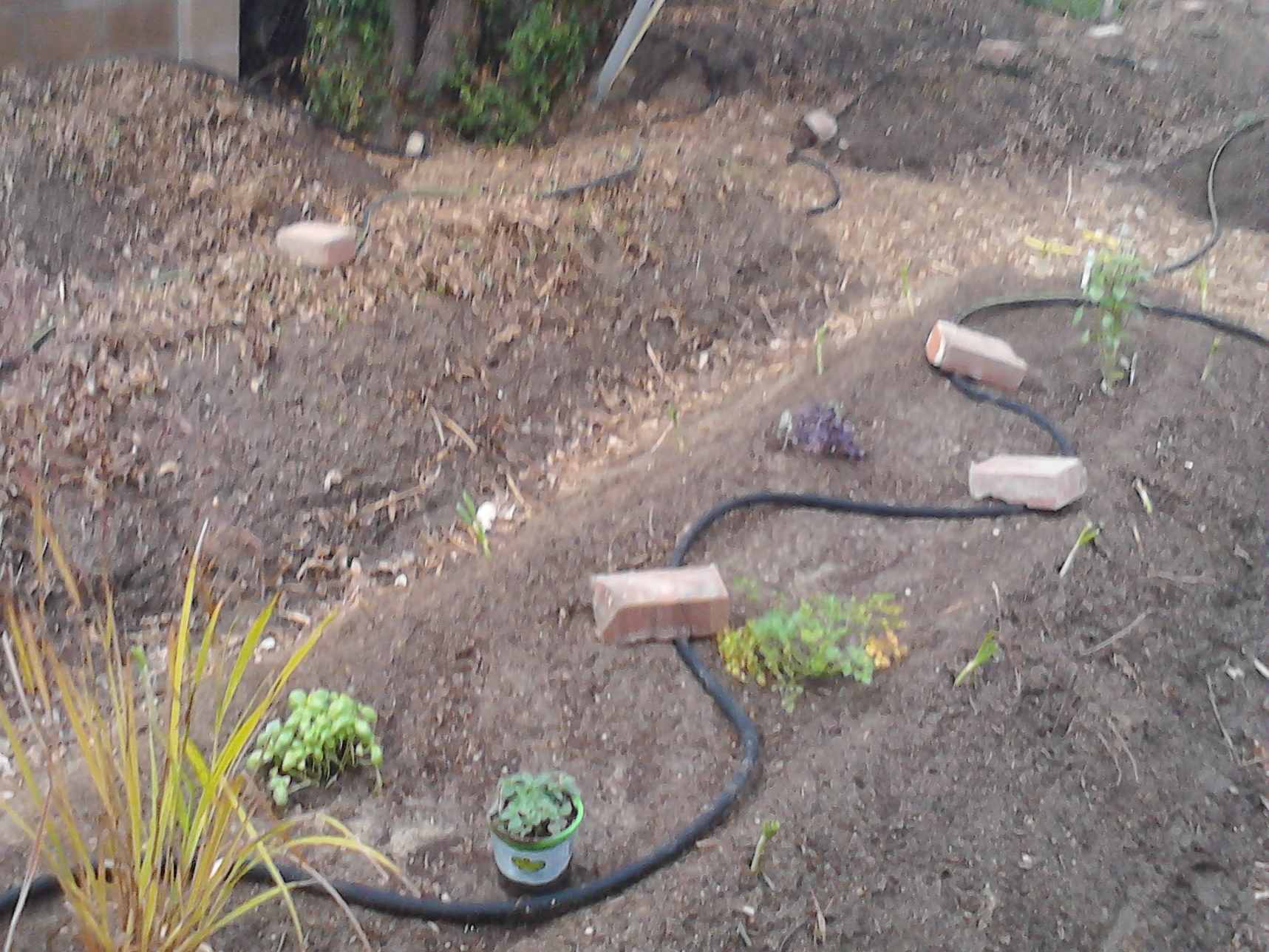
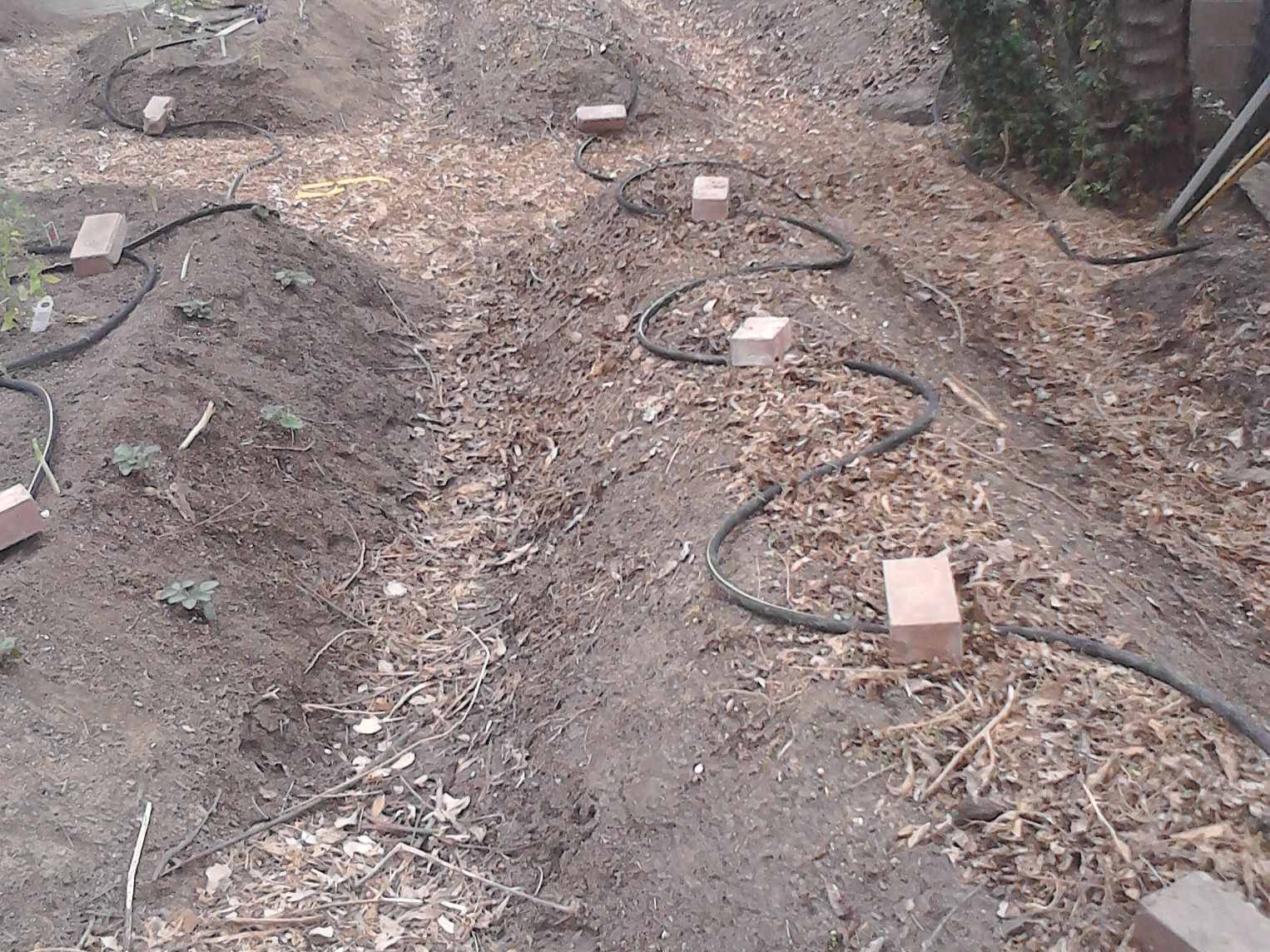
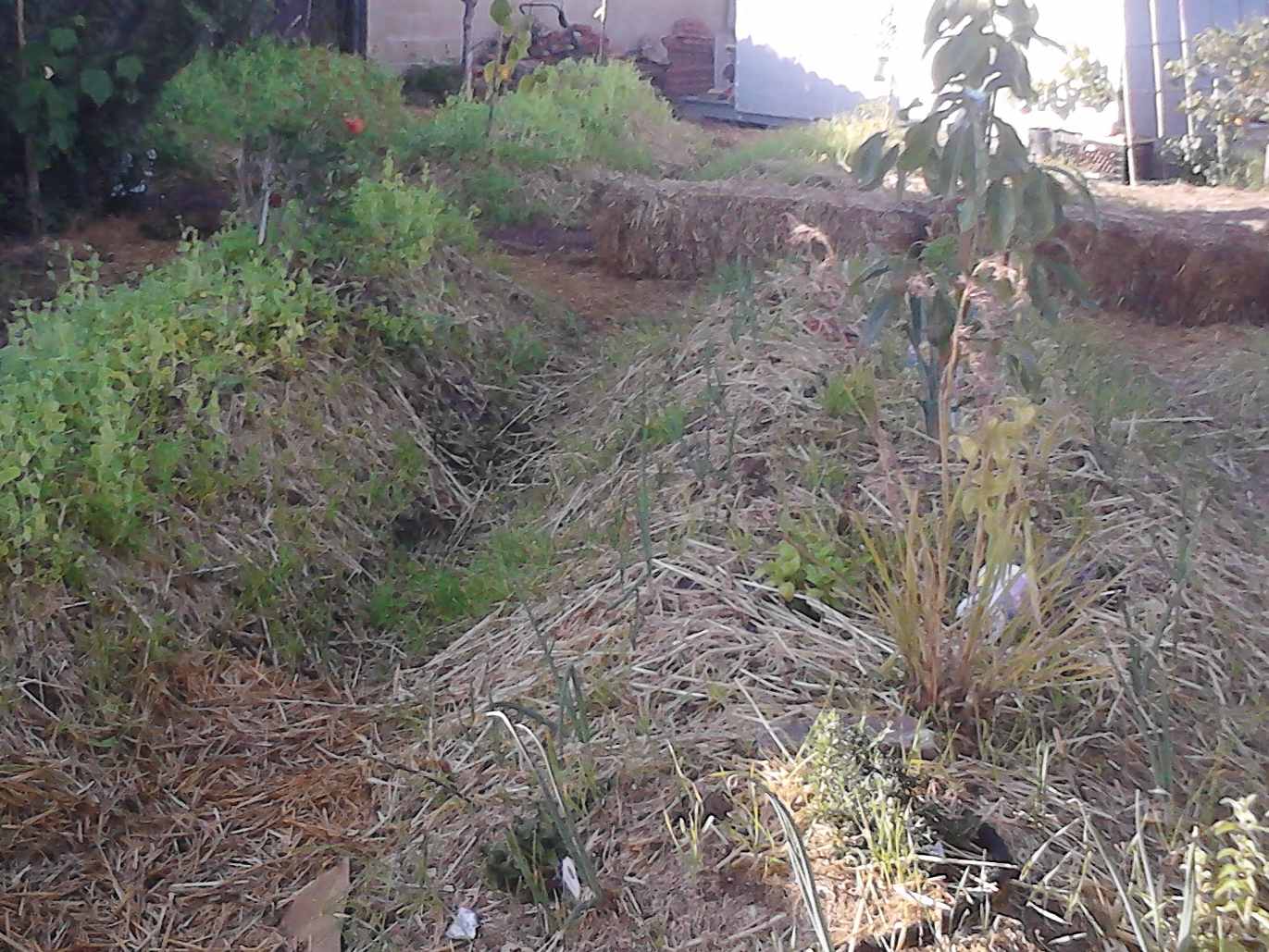
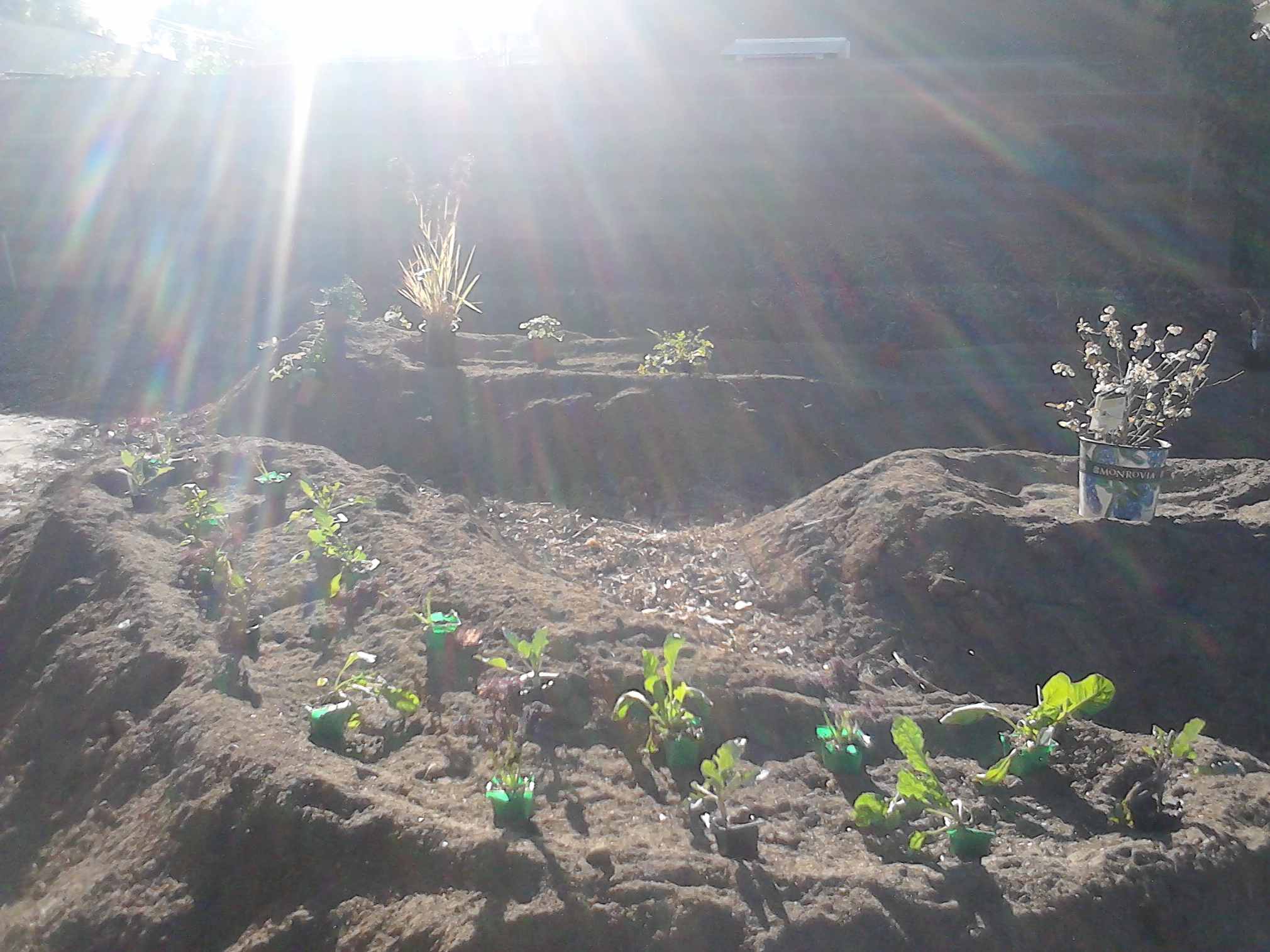
Advantages and Trade-Offs of Backyard Soaker Hose Irrigation Systems
I've had very good luck with soaker hoses as a solution for installing permaculture food forest gardens for clients who lead busy lives. While I tend to prefer all natural irrigation methods, and encourage folks to hand water when and where ever possible, I understand the trade-offs.
An inexperienced yet optimistic new gardener may end up with a "brown thumb" bad experience if they are encouraged to hand water and they miss a watering on a hot day for example. I've had such devastating moments where miscalculations and extreme temperatures made me realize that although I'm not generally for "set it and forget it" type of irrigation systems, sometimes it's better to be safe than sorry.
Having learned hard and sometimes costly lessons, I'd arrived at a hybrid solution involving an initial garden establishment phase of both hand watering and soaker hose use. I've found that with fresh from the nursery seedlings, it would be ill-advised to rely only on the soaker hose as it may take a while for the saturation patterns to work themselves out. And you may need to observe the flows in action for a while to determine if the water is getting distributed evenly with pooling up and/or running off in the wrong places and directions.
I've had best results with new gardens using the hybrid approach of hand watering for extra care and certainty that new plantings are getting well established and aren't stressed, then gradually over the course of days or weeks build confidence that the soaker hose is doing it's job.
Hopefully a food forest gardener will be visiting the gardens very frequently and thus have plenty of opportunities to do the routine maintenance on the system.
I'll often first help a client understand various mechanized irrigation options and if soaker hoses are a good fit, we'll do some calculations based on the flow rate, season, length of hose, etc. to determine what interval and duration to set a 9 volt battery powered spigot attached turn on/shut off valve. These units are relatively inexpensive, the batteries last a long time, and I've had no issues with them falling apart or leaking. Though like any product, there's a continuum of cost and quality. The simplicity of this system however gives new and busy gardeners peace of mind that irrigation is going to happen consistently almost without fail.
Other issues become too much water flow, rodent damage and disturbance of the hose, leakage, loss of pressure on slopes, etc. however with a bit of routine maintenance these issues can be easily addressed. Splicing into degraded or damaged lengths of hose is very quick and easy. Tracing leaks based on following the end of the hose backwards works in that if the last plantings on the route of the hose are not getting full water or even any at all, the issue is upstream. You just have to keep move towards the source until you find the leak.
I've used both weights such as bricks and stones, as well as the more common landscape staples to secure the hose as it meanders around plantings. The curved at the top staples are the right hardware for the job in that they hold the hose snug to the ground without adding pressure at any jagged angles. My only concern about staples in general is how they can get scattered around over the course of years and become a hazard. Someday I'd like to create an alternative which is less dangerous, perhaps with materials such as clay. They wouldn't be as cheap and easy to mass produce but they'd fail more safely.
After many successful and simple soaker hose system installations I've learned that as long as the gardener is mindful of seasonal variations of temperature, rainfall and thus the need to adjust the timer, they work great for a long time.
Compared to the cost, complexity, and difficulty of adjustment of the more grand scale mechanized irrigation systems, I've found that soaker hoses go a long way. One of the best features is that, they're easy enough to fix without an expensive professional landscape repair job. So for the do-it-yourselfers on a budget, they are great.
On many a professional crew I've installed the much more intensive pvc pipe/emitter systems, and as with any thing, there are advantages and trade-offs. But it just seemed like every time we'd install a new landscape design there'd be this jagged, dangerous, broken grave yard of previous installs that just get overrun by roots, damaged by tools and vehicles, get brittle where exposed to the sun, etc. etc.
My dream is that we all help to create a better economy-of-scale for the production of ollas, the unglazed clay pot alternative to getting appropriate amounts of water directly to the roots of plantings, all in a non-toxic, safe, and fun way. At first glance, it might be assumed that such systems would require a lot of human effort to manage, though with a bit of creative engineering, it's not hard to imagine lovely systems of halved bamboo poles acting as aquaducts weaving through the gardens to top off the buried ollas pots with fresh, well aerated, clean, living water from a stream, lake, or even backyard pond.